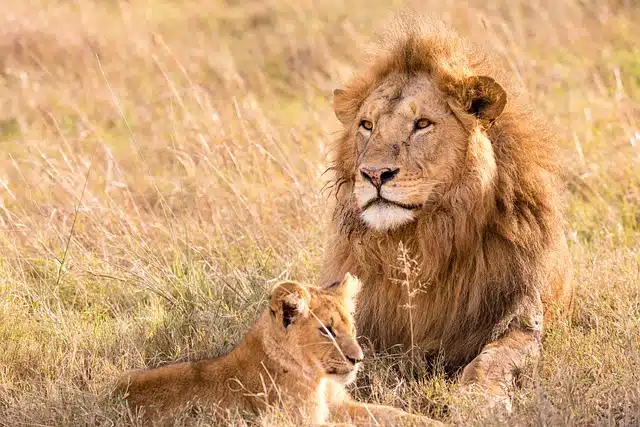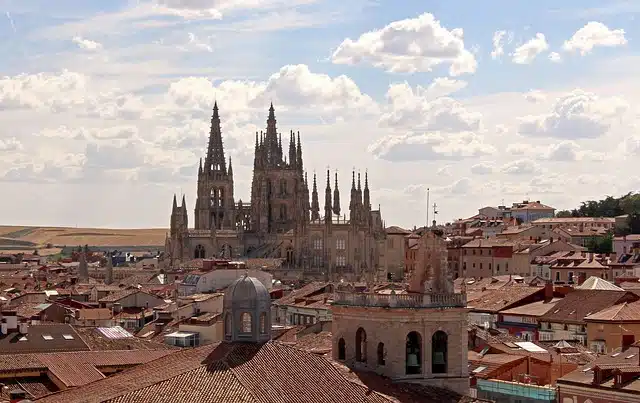
A lion is a feline.
A lion is a mammalian animal native to Africa that is characterized by its large head (crowned by a mane in the case of males), its strong teeth, its claws and its extensive tail that ends in a fringe. Thanks to its strength, it is known as “the king of the jungle” , although its most widespread habitat is the savanna .
With the scientific name Panthera leo , the lion belongs to the family of felids or felines : it has a rounded head, short snout, rear legs with four fingers and front legs with five fingers, and retractable nails. Furthermore, it is part of the digitigrade group (it relies only on its fingers to move) and, due to its diet, it is carnivorous (its diet is based on the consumption of meat).
Lion Characteristics
Lacking natural predators, the lion is a top predator that is located at the top of the food chain . Buffaloes, zebras, wildebeests, wild boars and deer are some of the most common prey of these animals, which can even kill other predators that compete with them (such as hyenas or leopards) but without devouring them.
Regarding its bond with man , the lion does not usually hunt human beings, despite the fact that many cases of this type of attacks have been recorded throughout history. People, meanwhile, have kept lions in captivity since ancient times, even promoting practices such as fighting between specimens or taming shows.
In colloquial language, on the other hand, a brave, fearless or fighting individual is mentioned as a lion. For example : “The new player on the team is a lion who does not stop running until the last second of the game” , “Marcos fought like a lion to defeat the disease” .

The autonomous community of Castilla y León (Spain) is home to cities such as Burgos, Valladolid and Salamanca.
The term in Spain
As a proper name, León is a province, a city and a municipality of Spain located in the northwest. The province of León belongs to the autonomous community of Castilla y León . Until January 2015 , its number of inhabitants exceeded 230 thousand, making it the second most populated city in the community.
Its origins take us back to the year 29 BC. C. , when it emerged as a military camp of the Roman Empire , specifically of the VI Victrix legion, which had only been in operation for a decade. Only in the year 74 , when the VII Gemina legion, under the command of Emperor Galba , had been definitively established, León acquired a level of greater importance, that of a camp city .
During the beginning of the 8th century , the formation and subsequent consolidation of al-Andalus involved a process of great complexity that is known as the initial Muslim stage of the Iberian Peninsula or the Muslim conquest of Hispania . It was the emergence of the most important medieval Christian kingdoms. At that time, the population of the city of León decreased considerably until its situation was finally reversed when the Kingdom of the Asturias or Kingdom of Asturias was established.
Historical development of León
At the beginning of the 10th century , León went through a very significant stage in its history , as it became head of the kingdom of the same name. Since then he began to actively participate in the Reconquista against the Muslims. In this way, he reached a privileged position within the Kingdom of Spain . The oldest Cortes in European history were located there, in the year 1188 , when Alfonso IX reigned, which earned it the title of Cradle of Parliamentarism in 2011 , awarded by the Junta de Castilla y León .
The arrival of the Late Middle Ages meant a decline in its importance, and this was due to the fact that it had lost its independence when the Kingdom of León joined the Castilian Crown in the year 1301 . During the War of Independence , which took place between 1808 and 1814 , he did not hesitate to rise. Already in 1833 it acquired the rank of provincial capital and in the 20th century it shone again thanks to a significant urban expansion.
